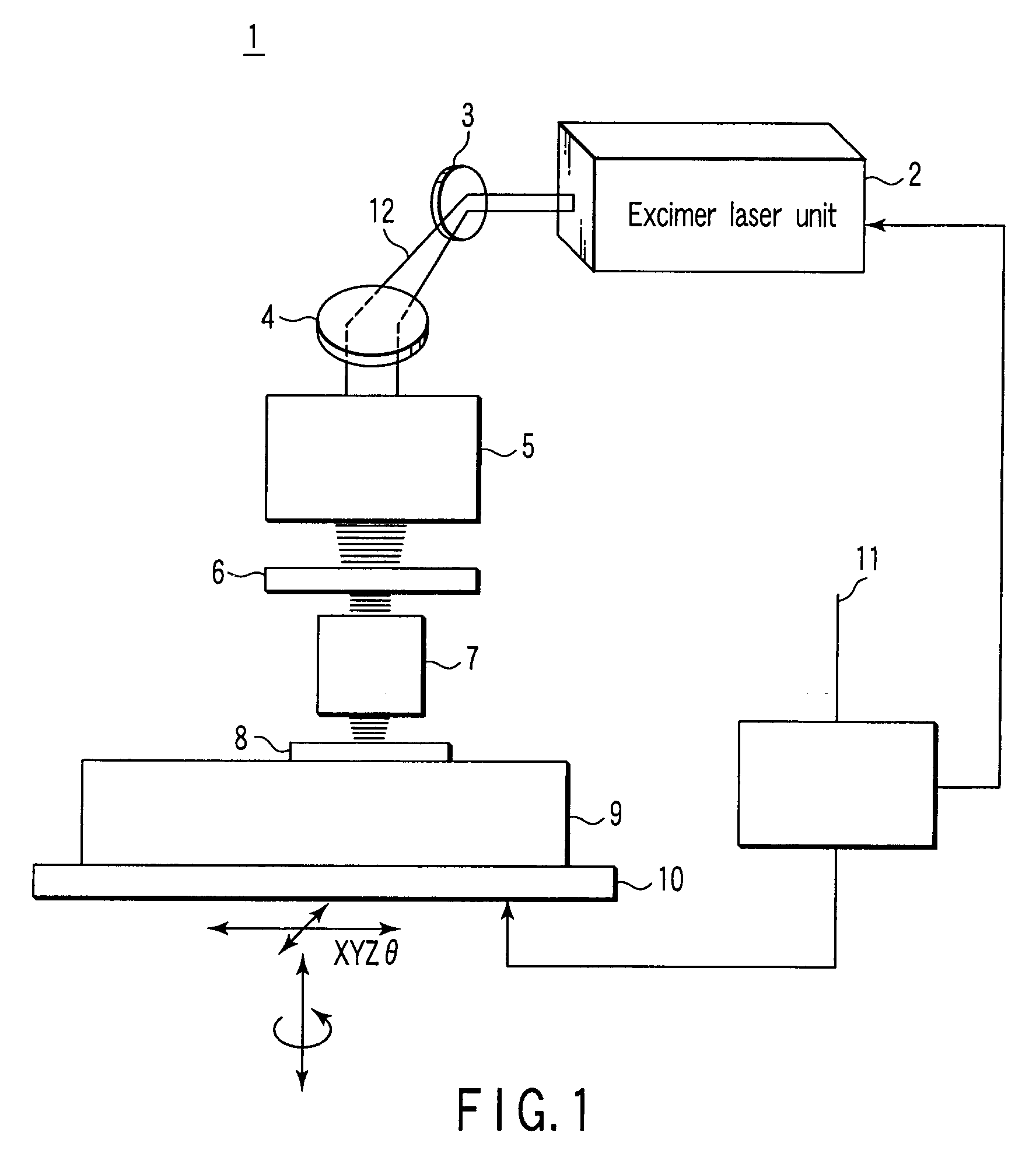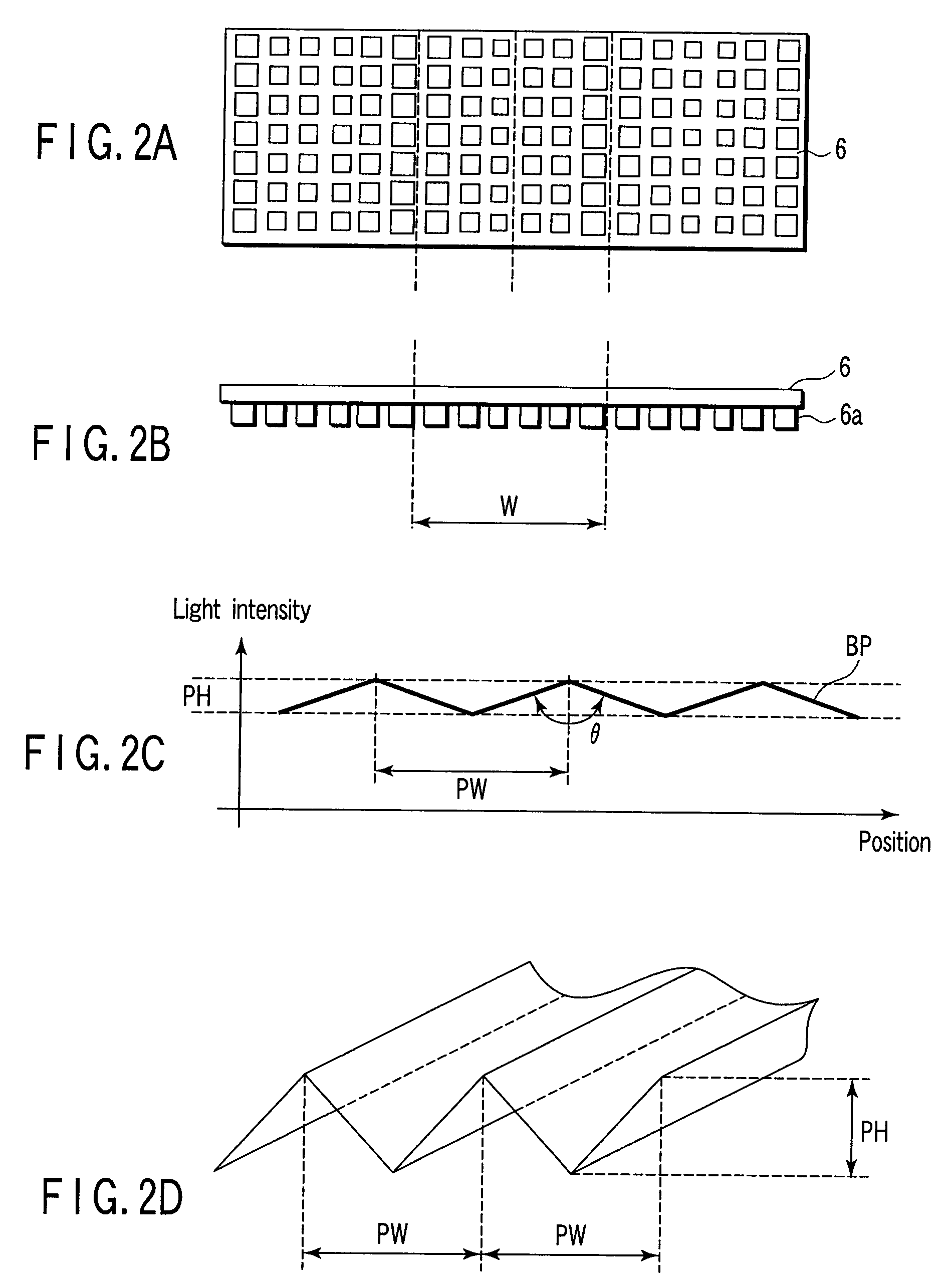Crystallizing method, thin-film transistor manufacturing method, thin-film transistor, and display device
a technology of thin film transistors and manufacturing methods, applied in the direction of manufacturing tools, instruments, transportation and packaging, etc., can solve the problems of difficult use of xecl lasers, inability to meet the requirements of low-temperature treatment, and poor mobility of mos transistors fabricated by using silicon single crystals, etc., to reduce the occurrence of crystallization displacement, and save electricity
- Summary
- Abstract
- Description
- Claims
- Application Information
AI Technical Summary
Benefits of technology
Problems solved by technology
Method used
Image
Examples
Embodiment Construction
[0050]Hereinafter, referring to the accompanying drawings, a preferred embodiment of the present invention will be explained.
[0051]First, the technical terms used in this specification are defined as follows. “Lateral growth” means that, when a film to be crystallized is melted and solidified, the growth of a crystal grain progresses laterally along the film surface. “Input fluence” is a measure representing the energy density of a laser beam for crystallization. It is obtained by integrating the amount of one shot pulse laser beam energy per unit area. Specifically, it means the average light intensity of a laser beam measured at a light source or in the irradiation region (irradiation field).
[0052]“Phase shifter” is an example of a phase modulation optical system. It is a spatial intensity modulation optical element for modulating the phase of the laser beam and is distinguished from a phase shift mask used in the exposure step in the photolithographic process. For example, a phas...
PUM
| Property | Measurement | Unit |
|---|---|---|
| grain size | aaaaa | aaaaa |
| wavelength | aaaaa | aaaaa |
| bandgap energy | aaaaa | aaaaa |
Abstract
Description
Claims
Application Information
 Login to View More
Login to View More - R&D
- Intellectual Property
- Life Sciences
- Materials
- Tech Scout
- Unparalleled Data Quality
- Higher Quality Content
- 60% Fewer Hallucinations
Browse by: Latest US Patents, China's latest patents, Technical Efficacy Thesaurus, Application Domain, Technology Topic, Popular Technical Reports.
© 2025 PatSnap. All rights reserved.Legal|Privacy policy|Modern Slavery Act Transparency Statement|Sitemap|About US| Contact US: help@patsnap.com



